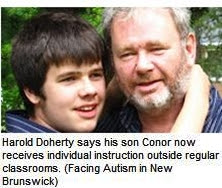The candidate genes most strongly implicated in NDD causation encode for proteins involved in synaptic architecture, neurotransmitter synthesis (e.g., γ-aminobutyric acid serotonin), oxytocin receptors, and cation trafficking (Sakurai et al. 2011). No single anomaly predominates. Instead, autism appears to be a family of diseases with common phenotypes linked to a series of genetic anomalies, each of which is responsible for no more than 2–3% of cases. The total fraction of ASD attributable to genetic inheritance may be about 30–40%.
Landrigan, Labertini and Birnbaum summarize the evidence for the "proof of principle" that early exposures during “windows of vulnerability” that open only in embryonic and fetal life and have no later counterpart can cause autism. They review the large numbers of synthetic chemicals, many of them untested, some of which are known to have toxic properties. The authors propose a strategic approach to researching possible environmental causes of autism by focusing:
"research in environmental causation of NDDs on a short list of chemicals where concentrated study has high potential to generate actionable findings in the near future. Its ultimate purpose is to catalyze new evidence-based programs for prevention of disease in America’s children."
The authors recognize that the list of 10 possible environmental causes deserving of focused research at this time would expand with time and scientific developments. As a start though they propose based on the studies referenced following the substance:
Lead (Jusko et al. 2008)
Methylmercury (Oken et al. 2008)
Polychlorinated biphenyls (Winneke 2011)
Organophosphate pesticides (Eskenazi et al. 2007; London et al. 2012)
Organochlorine pesticides (Eskenazi et al. 2008)
Endocrine disruptors (Braun et al. 2011; Miodovnik et al. 2011)
Automotive exhaust (Volk et al. 2011)
Polycyclic aromatic hydrocarbons (Perera et al. 2009)
Brominated flame retardants (Herbstman et al. 2010)
Perfluorinated compounds (Stein and Savitz 2011).
The strategic approach to environmental autism research is an idea who time has come. In fact it is long overdue. The respected authors of the EHP editorial will undoubtedly be vilified by the usual suspects, Neurodiversity ideologues and industrial and pharmaceutical spin doctors employed to cast doubt on the need for any environmentally focused autism research. However, given the support of the NIEHS and Autism Speaks, there is substantial reason to hope that the strategic focused study of environmental causes of autism and other neurodevelopmental disorders is underway.
It's about time.
The strategic approach to environmental autism research is an idea who time has come. In fact it is long overdue. The respected authors of the EHP editorial will undoubtedly be vilified by the usual suspects, Neurodiversity ideologues and industrial and pharmaceutical spin doctors employed to cast doubt on the need for any environmentally focused autism research. However, given the support of the NIEHS and Autism Speaks, there is substantial reason to hope that the strategic focused study of environmental causes of autism and other neurodevelopmental disorders is underway.
It's about time.









